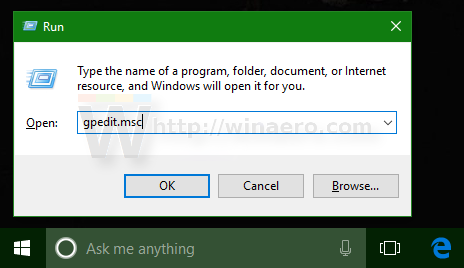If you are using a Microsoft Account to sign in to Windows 10, the operating system synchronizes certain settings between all the devices you use, including themes, ease of access options, regional and language preferences, and more. For a privacy reason, you may want to stop Windows 10 from syncing your passwords between devices you own.
Advertisеment
The various settings which are synced across PCs when using a Microsoft account include saved passwords, favorites, appearance options and a number of other settings you have made to your desktop to personalize it. If you prefer to enter your passwords manually on each PC, you need to disable the password synchronization in Windows 10.
To prevent Windows 10 from syncing passwords between devices, do the following.
- Open Settings.
- Go to the Accounts > Sync your settings page.
- On the right, go to the section Individual sync settings.
- The following page will be opened. There, turn off the switch "Passwords".
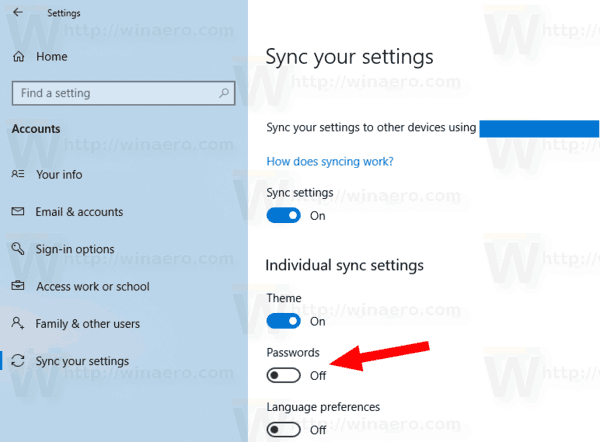
Alternatively, you can apply a Registry tweak.
Stop Windows 10 from syncing your passwords with a Registry tweak
- Open the Registry Editor app.
- Go to the following Registry key.
HKEY_CURRENT_USER\Software\Microsoft\Windows\CurrentVersion\SettingSync\Groups
See how to go to a Registry key with one click.
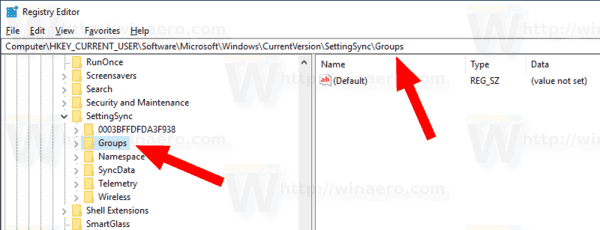
- On the left, expand the Groups subkey to the Credentials subkey.
- In the right pane for the Credentials subkeys, modify or create a new 32-Bit DWORD value Enabled.
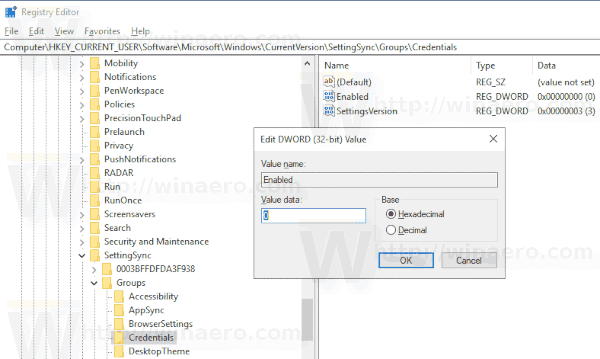
Note: Even if you are running 64-bit Windows you must still create a 32-bit DWORD value.
Set its value to 0 to disable the Password sync option. A value data of 1 will disable it.
Finally, you can apply a Group Policy option to disable the password synchronization feature and prevent users from enabling it.
To restrict Access to Control Panel and Settings in Windows 10, do the following.
- Open Registry Editor.
- Go to the following Registry key:
HKEY_LOCAL_MACHINE\SOFTWARE\Policies\Microsoft\Windows\SettingSync
Tip: See how to jump to the desired Registry key with one click.
If you do not have such a key, then just create it.
- Here, create a new 32-bit DWORD value DisableCredentialsSettingSync. Note: Even if you are running 64-bit Windows, you still need to use a 32-bit DWORD as the value type.
Set it to 2 to disable syncing your passwords.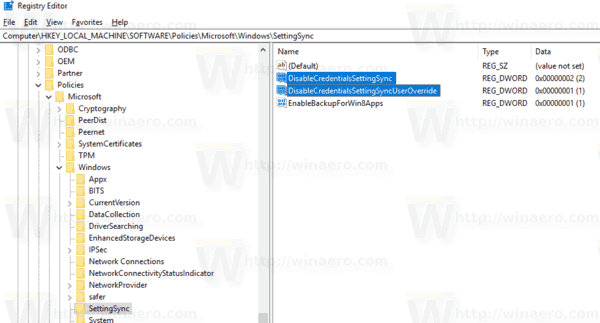
- Now, create a new 32-bit DWORD value DisableCredentialsSettingSyncUserOverride. Set to 1. This value is required to prevent users from enabling the password syncing using the Settings app.
- To make the changes done by the Registry tweak take effect, you need to restart Windows 10.
Later, you can delete the values value to allow the user to use the Sync Passwords option.
If you are running Windows 10 Pro, Enterprise, or Education edition, you can use the Local Group Policy Editor app to configure the options mentioned above with a GUI.
- Press Win + R keys together on your keyboard and type:
gpedit.msc
- Group Policy Editor will open. Go to Computer Configuration\Administrative Templates\Windows Components\Sync your settings. Enable the policy option Do not sync passwords. Optionally, you can enable the option "Allow users to allow to turn passwords syncing on".
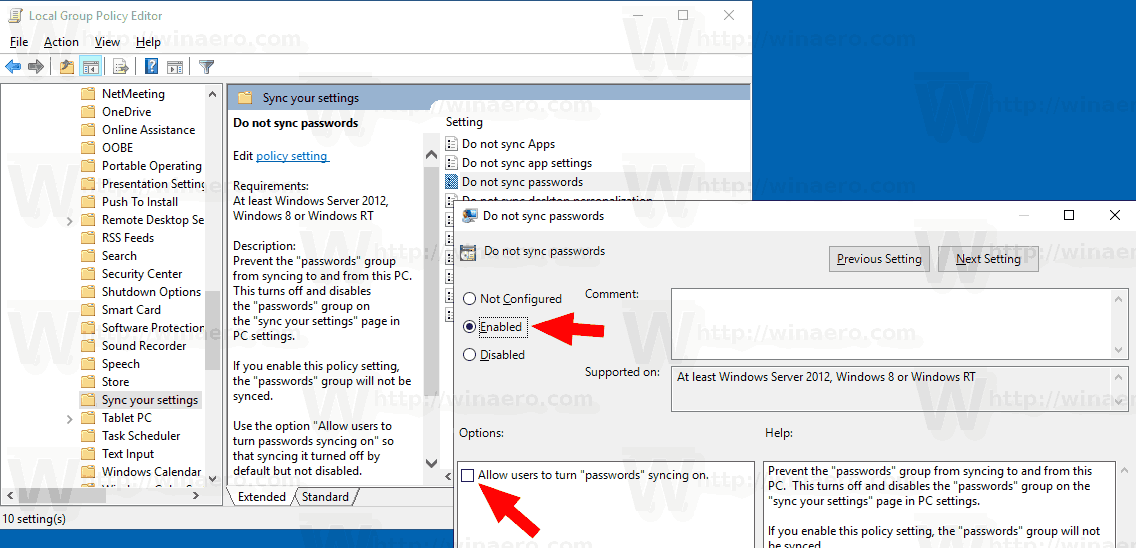
That's it.
Support us
Winaero greatly relies on your support. You can help the site keep bringing you interesting and useful content and software by using these options:
